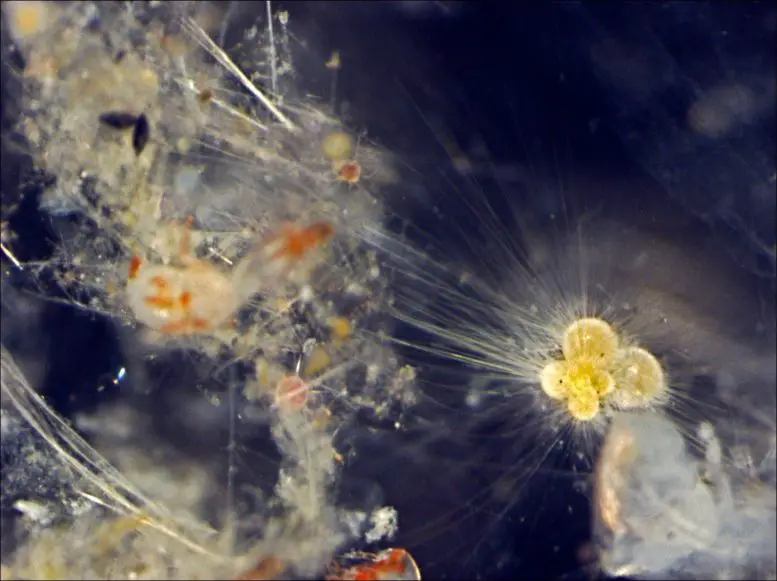Researchers have used nearly half a million fossils to solve a 200-year-old scientific mystery: why are the number of different species greatest near the equator and gradually decreasing towards the polar regions? The results were published today (February 15, 2023) in the journal. NatureIt provides valuable information about how biodiversity is built over time and how climate change can affect global species richness.
In both marine and land systems, species (including animals, plants, and single-celled organisms) have long been known to exhibit a “latitudinal diversity gradient” with biodiversity peaking at the equator. But until now, the limited fossil record has prevented researchers from thoroughly investigating how this diversity gradient first emerged.
In this new study, researchers from the Universities of Oxford, Leeds and Bristol used a group of unicellular marine plankton called planktonic foraminifera. The team analyzed 434,113 records in a global fossil database spanning the last 40 million years. They then examined the relationship between the abundance of species in time and space and potential drivers of the latitudinal diversity gradient, such as sea surface temperature and ocean salinity.
According to the researchers, these results suggest that the current distribution of species richness of planktonic foraminifera can be explained by a steep latitudinal temperature gradient from the equator to the poles over the past 15 million years. This may have contributed to higher speciation rates, opening more ecological niches in tropical regions in the water column compared to higher latitudes.
To test this hypothesis, the researchers investigated how modern planktonic foraminifera species lived at different depths in the vertical water column. They found that at low latitudes closer to the equator, species today are more evenly distributed vertically in the water column than at high latitudes.
This suggests that the main driver of the modern diversity gradient has been a significant increase in sea surface temperature differences and water column between low and high latitude regions over 15 million years. Warmer waters in the tropics were able to support a wider range of habitats with different temperatures and ecological niches in the vertical water column, encouraging the evolution of more species.
This is supported by the fact that the present-day tropics are richer than in warmer periods in the past (such as the Eocene and Miocene), with little or no vertical temperature variation in the oceans.
Additionally, lower high-latitude sea temperatures likely led to the extinction of many regional species populations, contributing to the present-day diversity gradient.
The graph shows how the number of different planktonic foraminifera species varies with latitude at different points in Earth’s history. Authorship: Fenton et al. nature 2023
Planktonic foraminifers belong to the Early and Middle Jurassic period (about 170 million years ago). They are found in oceans around the world, from the polar regions to the equator, and occupy a number of ecological niches in the upper two kilometers of the oceans. They can be stored in large quantities, as they form a hard outer shell. The global abundance of planktonic foraminifers and their exceptional fossil record over the past 66 million years make them an ideal group for this study.
Dr Erin Saupe (University of Oxford, Department of Earth Sciences), lead author of the study, said: “By solving how spatial patterns of biodiversity change over time, we provide valuable information critical to understanding how biodiversity is produced and maintained. on time scales.”
Associate Professor Tracey Eise (School of Earth and Environment, University of Leeds), co-author of the study, added: “Although they are small enough to fit on a pin, planktonic foraminifera have one of the most complete species-level fossils known to science. Our research includes 60 years of deep-sea sampling and also “It is based on the careful counting and recording of hundreds of thousands of specimens by research scientists. It is wonderful to be able to draw such important conclusions about the drivers of species distribution over time and pay homage to this extraordinary fossil archive.”
Co-author of the study, Dr Alex Farnsworth, senior research fellow in the Department of Geographical Sciences at the University of Bristol, said: “Understanding why species in ancient history were closer to the equator and more abundant and less close to the poles can provide important insights into how marine species such as plankton might respond in the future. These tiny single-celled organisms are a vital link in the marine food chain, so studying their response to climate change can help us better predict how they will be affected as temperatures continue to rise as climate change increases. It has potentially important implications for marine food webs and can be used to inform future measures to conserve marine life and preserve biodiversity.”
Source: Port Altele
